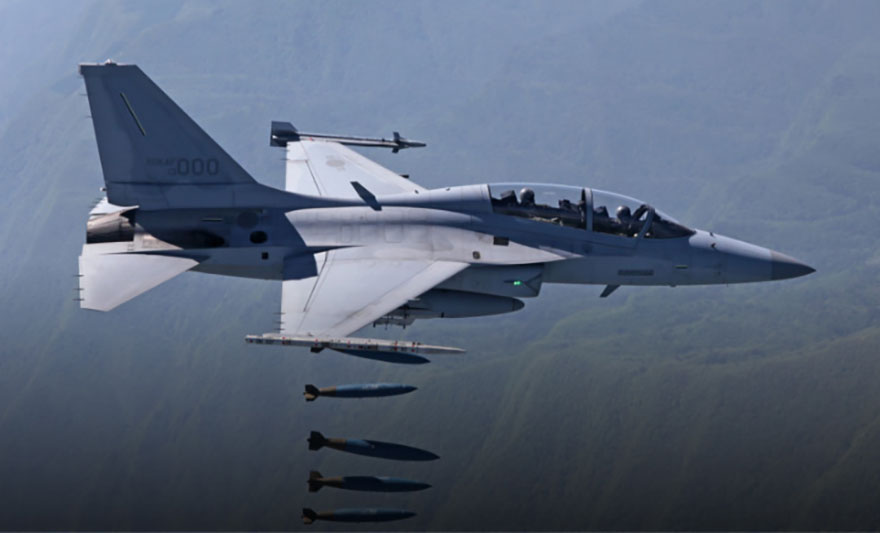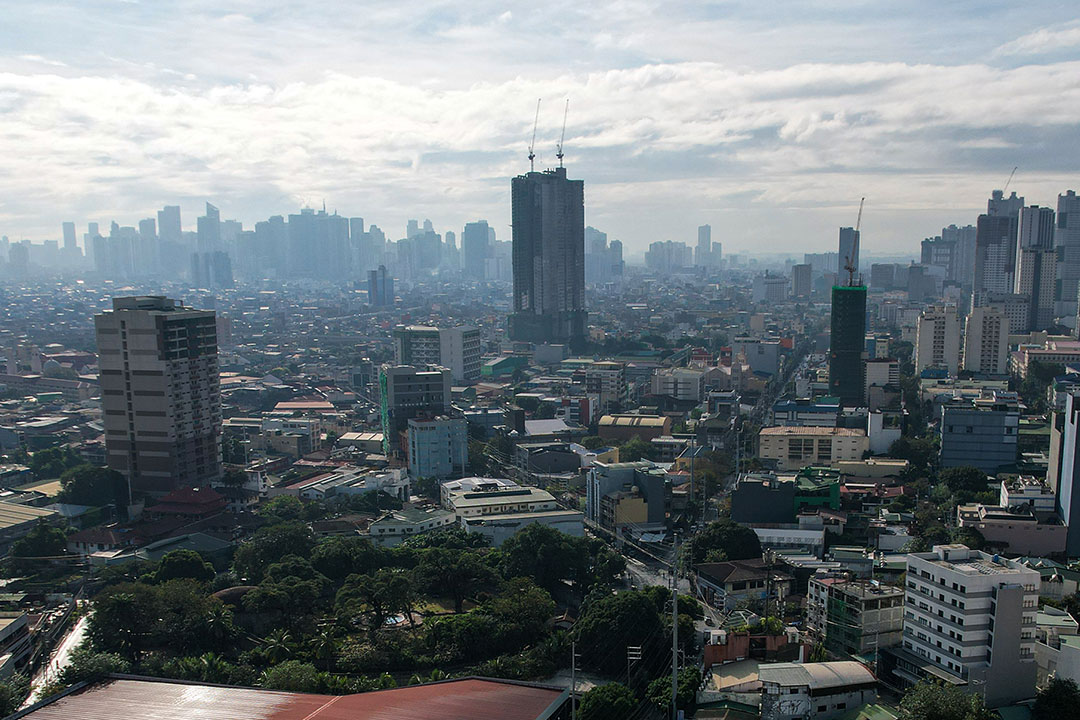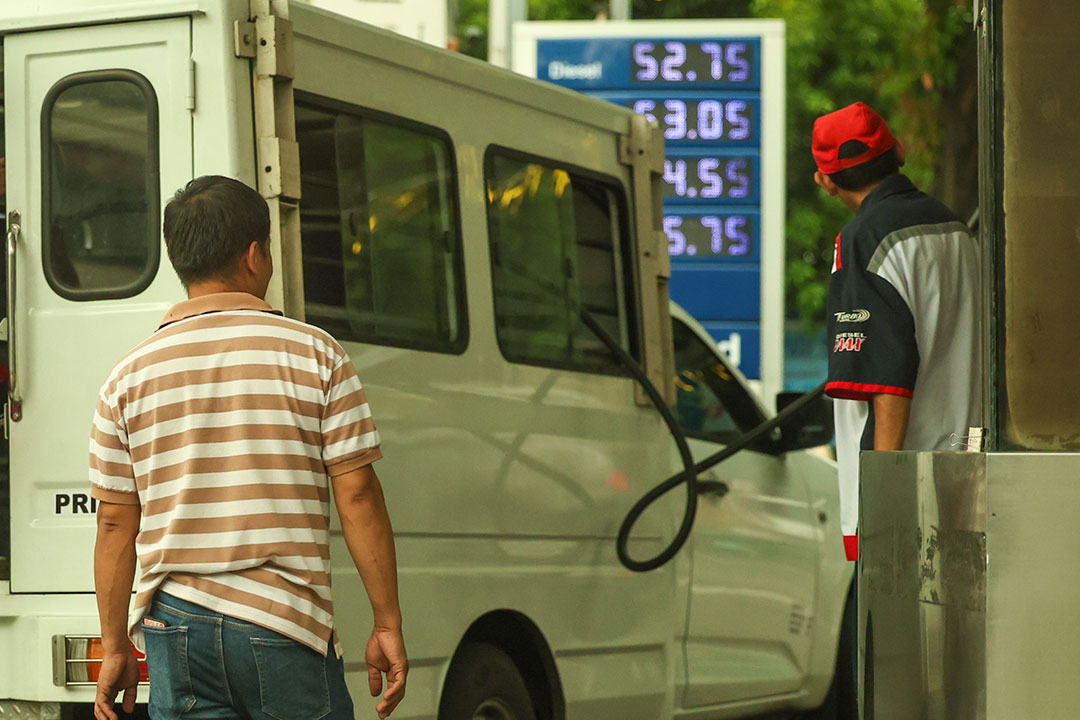
Upgrade to High-Speed Internet for only ₱1499/month!
Enjoy up to 100 Mbps fiber broadband, perfect for browsing, streaming, and gaming.
Visit Suniway.ph to learn
 KOREA Aerospace Industries FA-50 fighter jets — M.KOREAAERO.COM
KOREA Aerospace Industries FA-50 fighter jets — M.KOREAAERO.COMBy Kenneth Christiane L. Basilio, Reporter
THE PHILIPPINES needs multi-role fighters on top of light fighter jets to make China “think twice” before committing aggression, Manila’s top air force general said on Tuesday, with the planes being touted as a strong deterrent against foreign hostilities.
Having multi-role fighters would give the Southeast Asian nation formidable air combat capabilities, as it seeks to push back against Beijing’s expansive claims in the South China Sea, Philippine Air Force Commander Lieutenant General Arthur M. Cordura told a news briefing.
“We cannot be at par with China in 10 to 20 years from now,” he said in mixed English and Filipino. “That’s the reality here.”
“But we can project what we call credible deterrence,” he added, referring to having advanced fighter jets. “They will think twice before intruding into the country.”
The Philippines has been window-shopping for multi-role combat aircraft as part of efforts to boost its inventory of air force planes, which mainly consist of turboprops, amid tensions with China in the South China Sea.
The Defense department is “very close” to deciding on what advanced jets it would buy, Mr. Cordura said, noting that the air force wants fighters with “asymmetric” capabilities and could carry heavy weapon payloads for long-range flights.
“We need a platform that has longer endurance, a greater payload for ammunition, and has asymmetric capabilities,” he said.
“Our future operating bases will be on the periphery of the archipelago,” he added, citing the need for jets that could land on shorter and rugged runways.
The multi-role jets should also be interoperable with the military systems of the Philippines’ allies, Mr. Cordura said.
But the government is factoring in the cost of multi-role fighters as it evaluates which jet to acquire for the air force, he said. Manila is allotting as much as P400 billion for the purchase of 40 advanced jets, Defense Secretary Gilberto C. Teodoro, Jr. said last year.
The Southeast Asian nation has launched a $35-billion (P2 trillion) military modernization program aimed at bolstering its defense capabilities in the next decade, including the acquisition of advanced naval ships, planes and missile systems, as it pushes back against Beijing’s military might in the region.
China claims nearly all of the South China Sea via a U-shaped, 1940s nine-dash line map that overlaps with the exclusive waters of the Philippines, resulting in clashes at disputed maritime features, as both the countries uphold their claims in the marine-rich water.
Meanwhile, the Philippine Navy is prepared to secure oil exploration and drilling operations in the disputed water, vowing to shield them from attempts to disrupt the country’s exploitation of natural resources, spokesman Rear Admiral Roy Vincent T. Trinidad told the same briefing.
“We are prepared to provide protection to any other party that will be working with the Philippine government, and to provide security against any interference by any foreign power,” he said.
The Energy department last week said a Korean drillship arrived in the Philippines to bore new gas wells at the Malampaya gas field in the South China Sea, which is about 65 kilometers off the major island of Palawan.
Efforts to drill new gas sources come as Malampaya, the country’s sole natural gas source, nears depletion. Supplying a fifth of the country’s power needs, the gas field is expected to run out of easily recoverable gas by 2027.
The South China Sea dispute has hampered efforts to drill at Reed Bank, which may hold as many as 5.4 billion barrels of oil and 55.1 trillion cubic feet of natural gas, according to a 2013 report by the US Energy Information Administration.
The maritime feature lies about 85 nautical miles (157 km) off the coast of Palawan, within Manila’s 200-nautical mile exclusive economic zone.
South Korean defense company Korea Aerospace Industries earlier said it had signed a deal worth 975.3 billion won (P41 billion) with the Philippine Defense department to supply 12 aircraft.
The company will export 12 of its FA-50 fighter jets by 2030, it said in a statement.
Korea Aerospace signed a similar deal with Manila in 2014 and supplied another batch of 12 FA-50 jets in 2017.
South Korea, which has sold FA-50 fighter jets, corvettes, and frigates to the Philippines, aims to become the world’s fourth-largest arms exporter by 2027.




